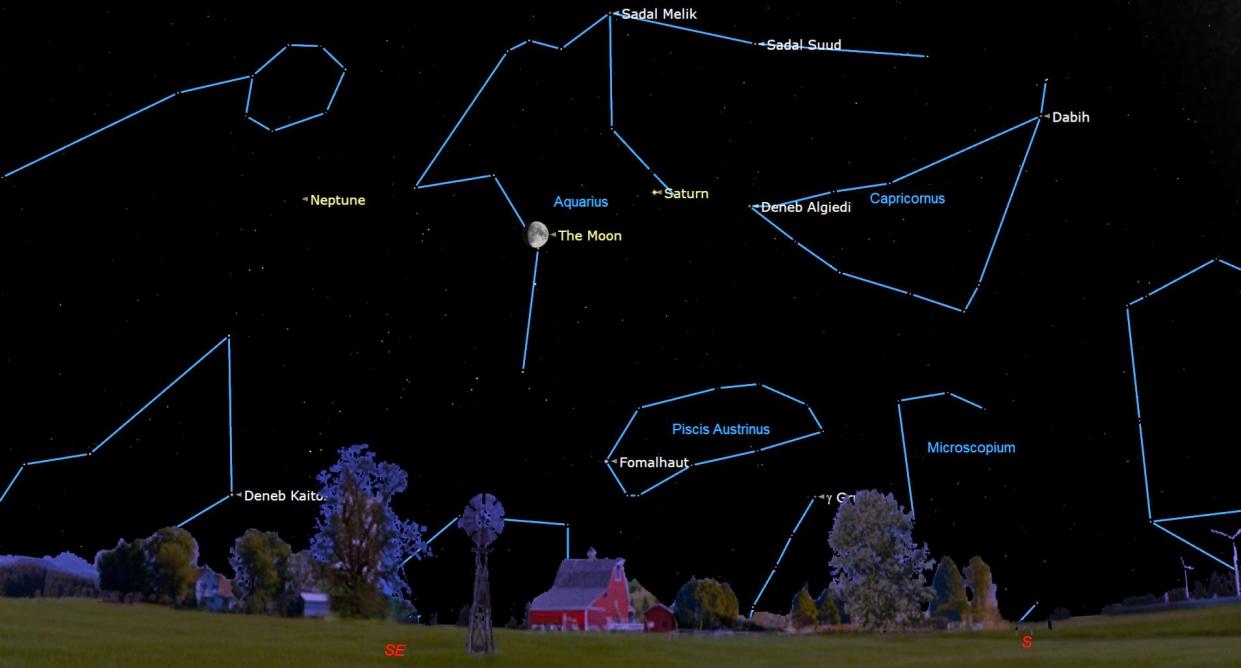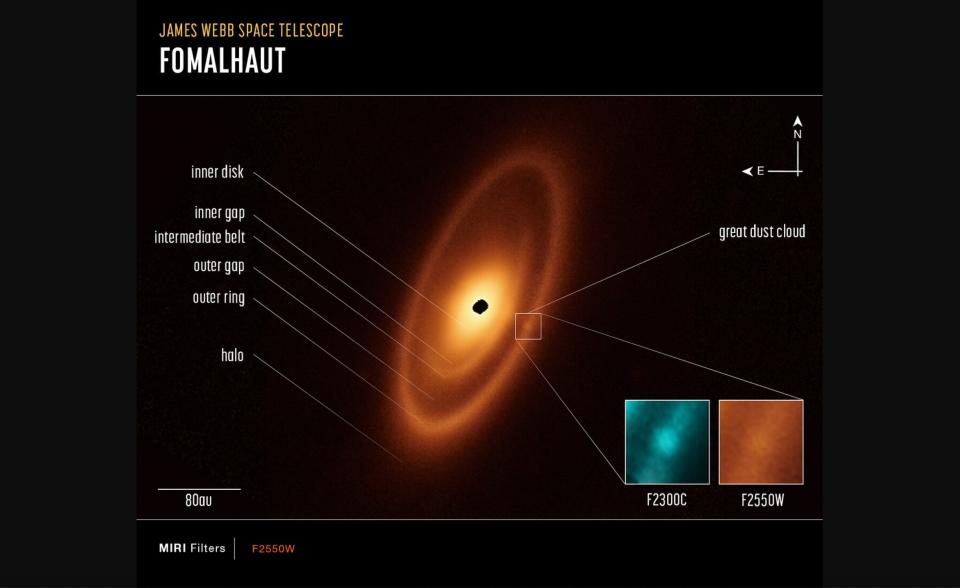See the moon and Saturn take a night swim in Aquarius tonight

The moon and Saturn are set to meet up for a night swim tonight when the two celestial bodies make a close approach to each other in the constellation of Aquarius, the Water Bearer.
During the close approach on Tuesday (Oct. 24), the moon will come to within 2 degrees of the south of Saturn. At around the same time as the close approach, the 10-day-old moon and the gas giant, which is the second-largest planet in the solar system, will share a right ascension (the celestial equivalent of longitude) in an arrangement astronomers call a conjunction.
From New York City, the pairing of the moon and Saturn will be visible in the southeastern sky at sunset. Saturn will be above and to the right of the moon, next to the left leg of the Water Bearer. The moon and Saturn will disappear from the early morning rise just before they sink below the horizon shortly before 4 a.m. EDT (0800 GMT).
Related: Night sky, October 2023: What you can see tonight [maps]
TOP TELESCOPE PICK:

Want to see the moon up close? We recommend the Celestron Astro Fi 102 as the top pick in our best beginner's telescope guide.
During the close approach and conjunction, the moon will have a magnitude of -12.5, with the minus prefix indicating a particularly bright object in the sky over Earth, while Saturn will be much dimmer with a magnitude of 0.5.
Despite this being a close approach, the moon and Saturn will still be too wide apart to be seen through the narrow view of a telescope. The two celestial objects should be visible together in the wider field of view of some lower-magnification binoculars, however.
The conjunction between the moon and Saturn in Aquarius should also offer skywatchers the opportunity to hunt and spot some tougher-to-see astronomical objects. For instance, swimming below the solar system bodies will be the magnitude 1.2 star Fomalhaut.
The brightest star in Pisces, Fomalhaut has a mass and width around twice that of the sun and is around 17 times as bright as our star, making it visible over Earth despite being located 25 light-years away. Fomalhaut earned a special place in the history of astronomy when, in 2008, it became the first star to possess an extrasolar planet or "exoplanet" in orbit around it to be imaged directly.

Flying high over the close approach between the moon and Saturn and to the East will be Altair, the brightest star in the constellation Aquila (the Eagle) and the twelfth brightest star in the night sky.
Altair is located around 16.7 light years from Earth and has around twice the mass of the sun but is only 11 times its brightness. It is believed to be relatively young, with recent estimates putting it at around 100 million years old compared to a middle-aged star like the sun, which is around 4.6 billion years old.
If you are hoping to catch a look at the moon and Saturn during the close approach and conjunction, our guides to the best telescopes and best binoculars are a great place to start.
If you're looking to snap photos of the moon and Saturn or the night sky in general, check out our guides on how to photograph the planets or how to photograph the moon, as well as our best cameras for astrophotography and best lenses for astrophotography.
Editor's Note: If you snap an image of the moon and Saturn during the close approach and conjunction and would like to share it with Space.com’s readers, send your photo(s), comments, and your name and location to spacephotos@space.com.

